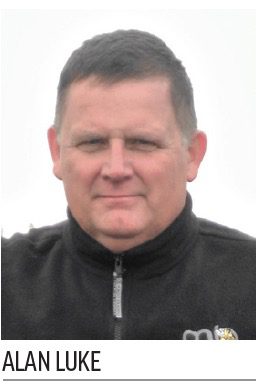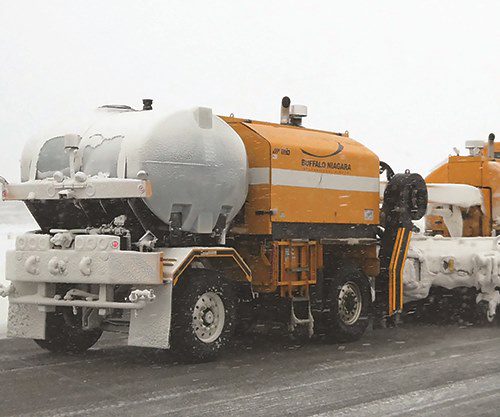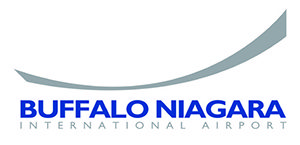With winter weather that is beyond unpredictable, Buffalo Niagara International Airport (BUF) needs top-notch expertise and equipment to keep its airfield clear for aircraft operations. “There’s no typical winter here in Buffalo,” says Airfield Superintendent Joe Guarino. “There’s always something different that happens during a snow event.”
With winter weather that is beyond unpredictable, Buffalo Niagara International Airport (BUF) needs top-notch expertise and equipment to keep its airfield clear for aircraft operations. “There’s no typical winter here in Buffalo,” says Airfield Superintendent Joe Guarino. “There’s always something different that happens during a snow event.”
 The airport’s location in western New York greatly complicates matters for crews battling the snow and ice. In addition to being in the path of winter storm fronts making their way across the country, BUF often receives lake effect snow—a common occurrence in the Great Lakes area caused by cold wind moving over a warm body of water. Because BUF is located on the shores of Lake Erie and across a thin strip of land from Lake Ontario, it is vulnerable from multiple directions.
The airport’s location in western New York greatly complicates matters for crews battling the snow and ice. In addition to being in the path of winter storm fronts making their way across the country, BUF often receives lake effect snow—a common occurrence in the Great Lakes area caused by cold wind moving over a warm body of water. Because BUF is located on the shores of Lake Erie and across a thin strip of land from Lake Ontario, it is vulnerable from multiple directions.
Guarino explains that lake effect snow can be alternately predictable and unpredictable. “I’ve been told a number of times it should have been over two hours ago, but it’s still hanging over us,” he relates.
|
Project: Winter Airfield Maintenance Location: Buffalo (NY) Niagara Int’l Airport Airfield Maintenance Staff: 25 Runways: 8,829 & 7,161 ft. long; both 150 ft. wide Multi-Task Equipment: M-B Companies Plows: Oshkosh Brooms: Sweepster Snowmelter: Trecan Of Note: Airport receives unpredictable weather due to its location in western NY, on Lake Erie & close to Lake Ontario |
Nevertheless, he and his crews closely monitor weather forecasts and work to prepare the right staff and equipment for managing winter conditions. BUF works directly with the National Weather Service, interacting almost hourly during snow events, to aid its decision-making process.
And then there are Buffalo’s temperature fluctuations, Guarino adds. A snow event can start out with 20-degree air temperatures and dry, blowing snow that is easy to clear off the airfield, but quickly transition to a completely different beast if the temperature rises near 31 degrees and moisture begins to freeze on the pavement.
By necessity, BUF’s winter operations strategy is very fluid. “We have a basic snow plan that we brief our stakeholders and staff on regularly, but things change depending upon the conditions,” says Guarino.
For example, if a storm brings heavy snow accumulation, the maintenance department will most likely dispatch its large vehicles that are equipped with both plows and brooms. But if freezing rain begins to fall, it will likely switch to equipment that apply chemical treatments.
According to Guarino, blizzards that cause reduced visibility are the most challenging conditions for BUF’s airfield crews. “I’ve been here where the sun is shining and the wind is blowing so strongly out of the southwest that we couldn’t see our hands right in front of our faces—zero visibility,” Guarino stresses. “There have been a number of times where we had to escort aircraft to the departure ends of the runway so they could get out.”
But airfield improvements are in the works to take some of the sting out of BUF’s challenging winter weather. A complete rehabilitation of Runway 5-23, scheduled for 2022, will include the installation of a surface movement guidance system (SMGS) and a parallel alpha taxiway equipped with full centerline lighting and an SMGS route to increase airfield safety in reduced visibility conditions.
Last year, the airport logged more than 80,000 annual operations on its two runways. Runway 5-23 is 8,829 feet long, and Runway 14-32 is 7,161 feet long; both are 150 ft. wide. Given BUF’s challenging and capricious weather, it takes a lot of work to keep each and every foot of the airfield safe for pilots and their passengers.
Equipment
One of the ways Guarino has improved the efficiency of snow removal throughout the years is acquiring and leveraging equipment that can perform multiple functions such as plowing and brooming. In fact, his department just received approval to purchase two more MB5 MTE (multi-task equipment) vehicles, bringing the airport’s total to five when the new units are delivered next winter.
Guarino notes that the additional equipment will allow crews to clear the full 150-foot width of BUF’s runways more quickly and efficiently than in the past. “It will be a great addition to our fleet,” he remarks. “They are durable and very maneuverable.”
In addition to its three giant multi-function vehicles from M-B Companies, BUF also uses Sweepster runway brooms, Oshkosh P-series plows, two 4,000-gallon deicing boom trucks and a variety of blowers and rotary plows. “There are times where some of them sit for a whole snow event,” says Guarino. “And other times, we’re using every piece of equipment.”

Such is the norm for an airport nestled in between two Great Lakes.
Each of the new MB5 MTE vehicles that BUF is eagerly awaiting will have a 24-foot plow on the front, a 22-foot broom in the center and a 1,300-gallon deicing system in the back. “Not only can they plow and broom at the same time, they can also deice the runway with just one operator,” says Alan Luke, a regional sales manager for M-B Companies.
Having multiple functions in one vehicle resonates with Guarino. “We need to be efficient to get on and off the runway surface as quickly and safely as we can,” he explains.
With the airport’s large multi-task equipment focusing on runways, other single-use equipment is available for use on taxiways, intersections, aprons and other areas that require more time to clear.
Luke notes that operating a uniform fleet—that is, multiple pieces of the same brand—can save an airport time and money for operator training, maintenance and spare parts.

Because of the impact the coronavirus pandemic has had on airports, FAA waived its local match requirement for Airport Improvement Program funds, and the MTEs and two front end loaders were funded at 100%. Additionally, BUF received $21 million under the Coronavirus Aid, Relief and Economic Security (CARES) Act, which the airport put toward its debt service.
“Like a lot of airports, we lost a lot of traffic; so revenue is not coming in like it used to,” explains Guarino. “It was huge for that equipment to be 100% funded.”
Training
Guarino considers thorough training a critical part of safe and efficient winter operations. He consequently takes advantage of mild winters and warmer months to make sure that all 25 members of his department are familiar with the airport’s equipment and standard practices. Particular attention is paid to FAA Part 139 requirements and reviewing the previous year’s performance. In addition, recurrent training covers situational awareness, fatigue and other common challenges for equipment operators.
Guarino also requires all staff to attend the basic and advanced Snow Academies at the annual NEC/AAAE International Aviation Snow Symposium held in Buffalo. “It makes us sharper and more focused,” he says of the hometown event that draws attendees from across the country and abroad.
The Snow Symposium is also a great venue for sharing best practices with other airports, he adds. “We learn from each other.”


 facts&figures
facts&figures

